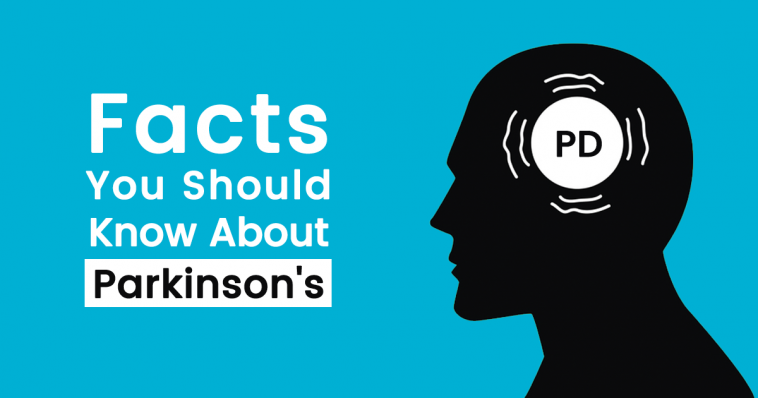What Is Parkinson’s Disease?
Parkinson’s disease (PD) is one of the most common neurodegenerative conditions only second to Alzheimer’s disease. PD is a progressive condition that a person may have for many years, gradually deteriorating the brain before symptoms become evident. There is no known cure for PD, although there are drugs to assist with the symptoms. It is thought in many cases that behavioral and environmental conditions, in addition to genetics, may contribute to the disease pathology and progression of PD.
Symptoms Of Parkinson’s Disease
There are three core symptoms that are used to diagnose PD:
- Involuntary movements of different parts of the body, known as a resting tremor.
- Slow movement.
- Stiff and inflexible muscles.
Other symptoms common in PD are depression, sleep problems, issues with gait and balance, and often, later in the disease progression, dementia may become apparent.
Who Is At Risk Of Developing Parkinson’s Disease?
It is thought that 1 in 500 people may be affected by PD, and the symptoms are most likely to present over the age of 50; however, individuals can become symptomatic from the age of 40, and on rare occasions earlier. There is also a higher incidence of men who develop PD than there are women.
What Causes Parkinson’s Disease?
The symptoms of PD are associated with loss of dopaminergic neurons in the substantia nigra region of the brain. Loss of these neurons leads to loss of the important neurotransmitter dopamine, a chemical involved in cell signaling, revealing the symptoms observed in individuals with PD, such as the resting tremor.
There are many years of research behind PD and trying to understand what drives the pathology and why the substantia nigra is targeted. Unfortunately for some, but fortunately for scientists, a break-through in research came in the 1980s. MPTP was a synthetic drug used by drug-users to replicate heroin, and alarmingly a number of users developed advanced Parkinson’ s-like symptoms [1]Langston, J.W., The MPTP Story. Journal of Parkinson’s disease, 2017. 7(s1): p. S11-S19.. Further identification saw that dopaminergic neurons in the substantia nigra were selectively targeted for cell death by this manmade drug. This has enabled the use of MPTP in cell models and animal models to help explain the mechanisms behind cell death and try and find drug targets.
Contributions To Parkinson’s Disease
Genetics
There are approximately 18 genes that have been linked to PD, but only about 10% of PD patients report family members with PD history [2]Klein, C. and A. Westenberger, Genetics of Parkinson’s disease. Cold Spring Harbor perspectives in medicine, 2012. 2(1): p. a008888-a008888.. Most cases of PD that arise from a genetic source, such as a mutation, are called sporadic PD. Having a family member with PD would potentially increase the risk of developing symptoms.
Cancer
A link between PD and cancer has been reported, and those with PD are more likely to develop melanoma [3]Liu, R., et al., Meta-analysis of the relationship between Parkinson disease and melanoma. Neurology, 2011. 76(23): p. 2002-9..
Of particular importance is the susceptibility to melanoma by individuals in the early stages of PD [4]Constantinescu, R., et al., Malignant melanoma in early-treated Parkinson’s disease: the NET-PD trial. Mov Disord, 2014. 29(2): p. 263-5.. The precise nature of the relationship between PD and melanoma has yet to be established.
Traumatic Brain Injury
Traumatic brain injury has been shown to impact on the blood-brain barrier and induce an inflammatory environment; inflammation appears in many diseases and can worsen symptoms. It has long been postulated that there is a link between brain injury and PD, and this is supported by Muhammad Ali’s early-onset diagnosis of PD following a career in boxing. A recent study examining PD and veterans with mild traumatic brain injury (mTBI) was able to support previous indications with results indicating the veterans with mTBI were at a 56% increased risk of developing PD [5]Gardner, R.C., et al., Mild TBI and risk of Parkinson disease: A Chronic Effects of Neurotrauma Consortium Study. Neurology, 2018. 90(20): p. e1771-e1779..
Prevent Parkinson’s Disease
Smoking
Interestingly, there have been a number of studies that indicate a low PD risk in tobacco smokers. This risk can further decrease the longer the smoker smokes for. When individuals stop smoking, their risk has been shown to increase again; the longer they abstain, the higher the risk [6]Thacker, E.L., et al., Temporal relationship between cigarette smoking and risk of Parkinson disease. Neurology, 2007. 68(10): p. 764-8.. Whilst smoking may reduce the risk of developing PD, it does increase the risk of other diseases such as lung cancer and cannot, therefore, be advocated.
Coffee And Caffeine
A number of studies on different cohorts have confirmed that coffee drinkers are at a reduced risk of developing PD and this appears to be specifically related to caffeine. A large study of women and men demonstrated a positive impact of caffeine on PD incidence; this was seen more noticeably in the men. A reduction in PD risk was more significant in women not taking postmenopausal hormones when compared to those that were [7]Palacios, N., et al., Caffeine and risk of Parkinson’s disease in a large cohort of men and women. Movement disorders : official journal of the Movement Disorder Society, 2012. 27(10): p. 1276-1282..
Exercise
Leading a healthy lifestyle will reduce the risk of many diseases, and that does not exclude PD. Regular aerobic exercise has been proven to protect against developing PD and not only that, it can slow the disease progression in those with PD. Exercise can strengthen core muscles to assist with balance and prevent falls, a symptom of the disease. Aerobic exercise constitutes anything that can raise your heart rate; this includes a steady walk and even rigorous housework.
Diet
A good quality diet that is low in saturated fats but high in polyunsaturated fats can help prevent the onset of PD. It is important to ensure that a diet is rich in omega-3 polyunsaturated fatty acids (PUFAs), found in oily fish, nuts, seeds and plant oils such as canola oil. All diets should also be rich in vitamins and minerals, and there are reports that vitamin D is depleted in PD patients [8] Mpandzou, G., et al., Vitamin D deficiency and its role in neurological conditions: A review. Rev Neurol (Paris), 2016. 172(2): p. 109-22. – so all you need is a little bit of sunshine as that is where we get much of our vitamin D from.
Summary
Parkinson’s disease is a complex condition, and scientists continue to research how the disease starts and continues to progress. Early signs of the disease are necessary to stop its progression. In the meantime, be sure to live a healthy lifestyle. In fact, if you put on your walking shoes and go out for a walk, you will already be ticking the right boxes for gaining vitamin D and exercise. Share this article with friends and family so they know what they can do to help prevent or slow down diseases such as Parkinson’s disease.
References



